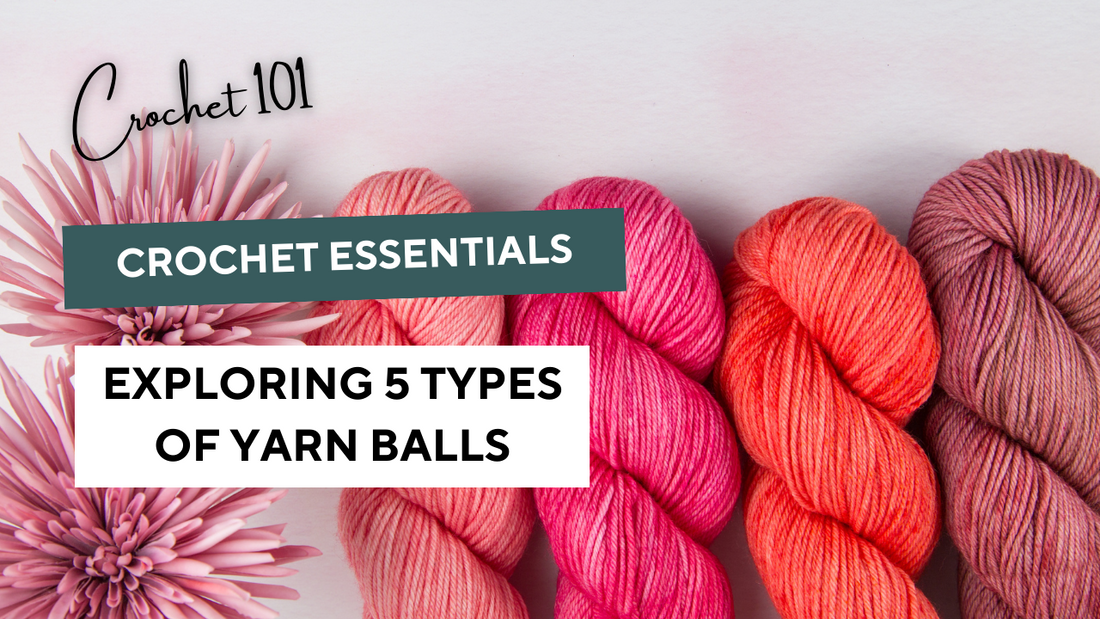
Crochet Essentials: 5 types of yarn balls and how to use them
Embarking on a crochet project involves not only selecting the perfect pattern but also choosing the right yarn type. With a plethora of options available, understanding the characteristics and applications of different yarn balls is essential for crocheters of all levels.
In this comprehensive guide, we'll delve into the intricacies of various yarn balls, including the typical types of chenille yarn and cotton yarn, and provide insights into when it makes sense to transition between different ball types to optimize your crochet experience.
The 5 Types of Yarn Balls
1. Ball YarnBall yarns, wound by hand, are versatile and suitable for a wide range of crochet projects.
While they are commonly used for small accessories and garments, such as hats, scarves, and mittens, they can also be used for larger projects with frequent color changes.
However, if the project requires a substantial amount of yarn or consistent color throughout, transitioning to a larger ball type may be more efficient.

2. Skein Yarn
Skein yarns, commonly found in craft stores, come in standardized lengths and weights, making them convenient for a variety of projects.
When working with chenille yarn, skeins are often preferred due to their soft texture and ease of use. Skein cotton yarns are also popular for their durability and versatility, making them suitable for a wide range of crochet projects, from amigurumi to dishcloths.
If the project requires a significant amount of yarn or consistent color throughout, transitioning to larger skeins or cake yarns may be necessary to minimize interruptions.

3. Cake Yarn
Cake yarns, wound using a yarn winder, offer the convenience of center-pull access and are perfect for projects where color gradients or self-striping effects are desired.
While they are commonly used for shawls, cowls, and lightweight garments, cake yarns can also be suitable for amigurumi and plush toys, particularly if durability and washability are desired.
However, if the project requires a substantial amount of yarn or consistent color throughout, transitioning to larger cake or cone yarns may be more practical.

4. Hank Yarn
Hank yarns, often used for hand-dyed or hand-spun fibers, add a unique touch to crochet projects. While they are less common in standard crochet projects, hank yarns can add artisanal charm and texture to special pieces.
When working with hand-dyed or specialty cotton yarn, hanks may be preferred for their unique color variations and artistic appeal.
However, if the project requires a significant amount of yarn or consistent color throughout, transitioning to larger hank or cone yarns may be necessary to maintain continuity.

5. Cone Yarn
Cone yarns, designed for industrial and machine knitting, offer efficiency and durability for specialized applications. While less commonly used in traditional crochet, cone yarns can be practical for large-scale projects or industrial manufacturing.
When working with cotton yarn for larger projects such as blankets or garments, cone yarns may be preferred for their economical value and uninterrupted supply. However, if the project requires frequent color changes or smaller quantities of yarn, transitioning to smaller ball types may be more manageable.

Conclusion
By understanding the characteristics and applications of different yarn balls, crocheters can optimize their projects for efficiency, durability, and aesthetic appeal.
Whether working with chenille yarn, cotton yarn, or specialty fibers, each ball type offers unique benefits and possibilities for elevating crochet creations. With careful consideration and experimentation, crocheters can confidently select the perfect yarn ball to bring their creative visions to life, ensuring a rewarding and enjoyable crochet experience from start to finish.
